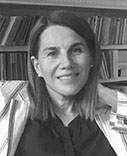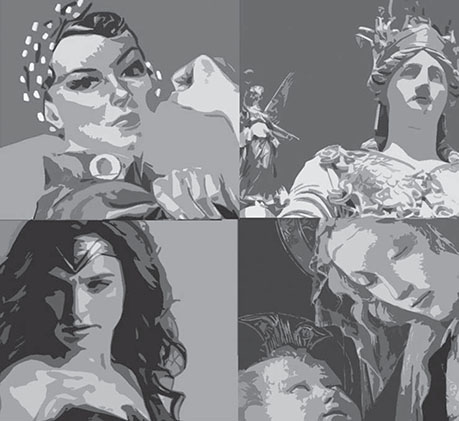
Margarita Cereijido
COWAP CONFERENCE
COWAP Conference “What Do Women Want Today?”
Margarita Cereijido
Margarita Cereijido, Ph.D., is a training and supervising analyst and faculty member of the Washington Baltimore Center for Psychoanalysis. She has written and taught on gender, culture, and prejudice. Cereijido is a member of the IPA’s Committee of Women and Psychoanalysis (COWAP) and is in private practice in Washington, D.C.
cereijido.margarita@gmail.com

Margarita Cereijido
The Committee of Women and Psychoanalysis of the International Psychoanalytical Association ( COWAP ) organized a conference on “What Do Women Want Today?” The conference, which I chaired with Nancy Goodman, was co-sponsored by the Washington Baltimore Center for Psychoanalysis and The Contemporary Freudian Society. The Washington School of Psychiatry, and the Washington Professionals for the Study of Psychoanalysis helped to promote it. It was held in Washington DC on November 8 and 9, 2019,
The speakers were leading international thinkers in the field. They were also from different countries and had different psychoanalytic perspectives, which encouraged a diverse dialogue.
The conference built on the International Psychoanalytical Association’s (IPA) recent London congress on “The Feminine.” Virginia Ungar, the first woman president of the IPA in its 104 years, delivered the keynote lecture: “Authority, Power and Gender in Institutional Life.” This was followed by contributions from Patricia Alkolombre, Graciela Abelin-Sas Rosemary Balsam, Cecile Bassen, Anita Bryce, Paula Ellman, Elizabeth Fritsch, Leticia Glocer Fiorini, Nancy Goodman, Adrienne Harris, Janice Lieberman, Adriana Prengler, Arlene Kramer Richards, and me. Additionally, Giselle Carino, CEO of International Planned Parenthood Federation/Western Hemisphere, spoke about the importance of women having agency over their bodies.
An opening evening cocktail reception provided an enjoyable opportunity to socialize. The next day at lunch, small groups with facilitators discussed issues in depth and engaged with the speakers and conference participants.
The conference explored contemporary answers to Freud’s classic question, addressed to Marie Bonaparte in 1925, “What do women want?” Freud’s response to his own question, which became the classic response, was that women want to be loved.
Psychoanalysts widely agree that women (and men) want to be loved. But today, living in a different cultural context, we also conceive women as being desiring subjects, agents with projects of their own. The conference reviewed classic psychoanalytic theories about the feminine within this new cultural context. It challenged hegemonic gender prejudices, and participants jointly thought about new conceptions that do not pathologize different lifestyles and family configurations.
New Feminine Ideals and Identificatory Models
The first thing women want today is not to be victims of violence. This was the topic of the 2017 COWAP conference in Washington.
Historically, a culture that implicitly sees women as occupying a denigrated place in society tolerates violence against them. Immersed in that culture, women have difficulties challenging that violence and some may even identify with the aggressor.
As Patricia Alkolombre pointed out, today there is less tolerance for misogyny. Popular women’s movements such as “Ni una menos” in Argentina are confronting femicide, while movements like “Me too” in the U.S. are confronting sexual harassment. Those movements are having a powerful effect on culture and on women’s conception of themselves. They are creating new ideals and identificatory models. Instead of being submissive, women are identifying with these movements and feeling supported and empowered to challenge violence against them. Similarly, women are demanding to be in charge of their reproductive rights and fighting for the legalization of abortion.
New Feminine Scenarios
The conference built on those foundations, and focused on women as human beings and whole persons who sublimate, desire, create, and have agency over their own projects. It explored how to think about new feminine scenarios. Today women are exploring new gender identities, new gender dynamics, and new family configurations. They are also expressing new attitudes toward motherhood.
Other speakers and their topics were Leticia Glocer Fiorini, women’s desires; Adriana Prengler, women having a voice; and Paula Ellman, Cecile Bassen, Nancy Goodman, and Alene Kramer Richards, women having agency.
Traditionally, the only feminine desire that was considered legitimate was to be a mother. Women’s ideal was to get married and become a mother—an ideal that was transmitted from generation to generation.
Alkolombre spoke about new maternal scenarios, and Elizabeth Fritsch, about women struggling with motherhood. Carino reminded us that the struggle for women to be in charge of their reproductive rights must go on.
Theorists still conceive of motherhood as a very special aspect of the feminine, but some are concerned that the sanctification of motherhood can inhibit women from pursuing other avenues of fulfillment.
Graciela Abelin Sas Rose and Rosemary Balsam reminded us that gender stereotypes are reductionistic, and that each woman has a singular conception of her own femininity.
New Psychoanalytic Theories
New psychoanalytic theories conceive the feminine—and gender notions in general—as transformative. Gender ideals change within the cultural context, and each woman has her singular notion of the feminine.
Today, we understand gender conceptions as the product of social constructions of gender identity. Those conceptions are related to conscious and unconscious identifications, as well as the product of the history of the place women and men have occupied within their families and society. There is less binarism, and both males and females have more characteristics that were traditionally associated with the other gender.
In my own conference remarks, I argued that there are two important aspects of how we, as analysts, engage these changing notions of the feminine. The first aspect is thinking about new theories. For example, Leticia Glocer Fiorini spoke about how we could replace Freud’s notion of penis envy with “power envy,” and how the characteristics earlier attributed to women—such as masochism, passivity, and narcissism—are no longer viewed as innate, but instead relate to the place women occupy in society.

The second aspect of how analysts engage these changing notions of the feminine is our prejudices.
Understanding and Monitoring Our Gender Prejudice
These changing contemporary notions of the feminine challenge classic psychoanalytic theory and practice, compelling analysts to think about new psychoanalytic theories. Analysts also need to engage with their own prejudices regarding changing notions of the feminine.
The way we listen and give meaning to our patients’ material about these new notions of the feminine is significantly affected by both the theories we use and by our prejudices, our subjective views of the world.
The prevalence of male hegemony affects everything. Prejudice inevitably exists in the minds of both analyst and patient, through family beliefs and sense of belonging.
Today, psychoanalysts tend to be less focused on what a “normal” woman should look like, and more interested in being attuned to each woman’s subjectivity, desires, and personal and social realities. We have to be curious in order to allow ourselves to hear different and new perspectives and information from our patients.
The conference was an enormous success, intellectually stimulating and attracting a full house, bringing together local, national, and international psychoanalysts from as far away as Japan. It also strengthened the Washington DC psychoanalytic community’s connection with IPA. The audience enjoyed conversing with Ungar, the current president; Prengler, vice-president elect; Fiorini, chair of the Committee on Gender Diversity; and Ellman, chair of COWAP, among others. IPA’s Committee on Social Media provided an excellent coverage of the event, which was viewed by over 10,000 people.